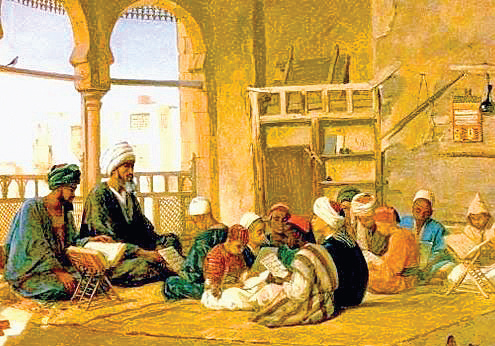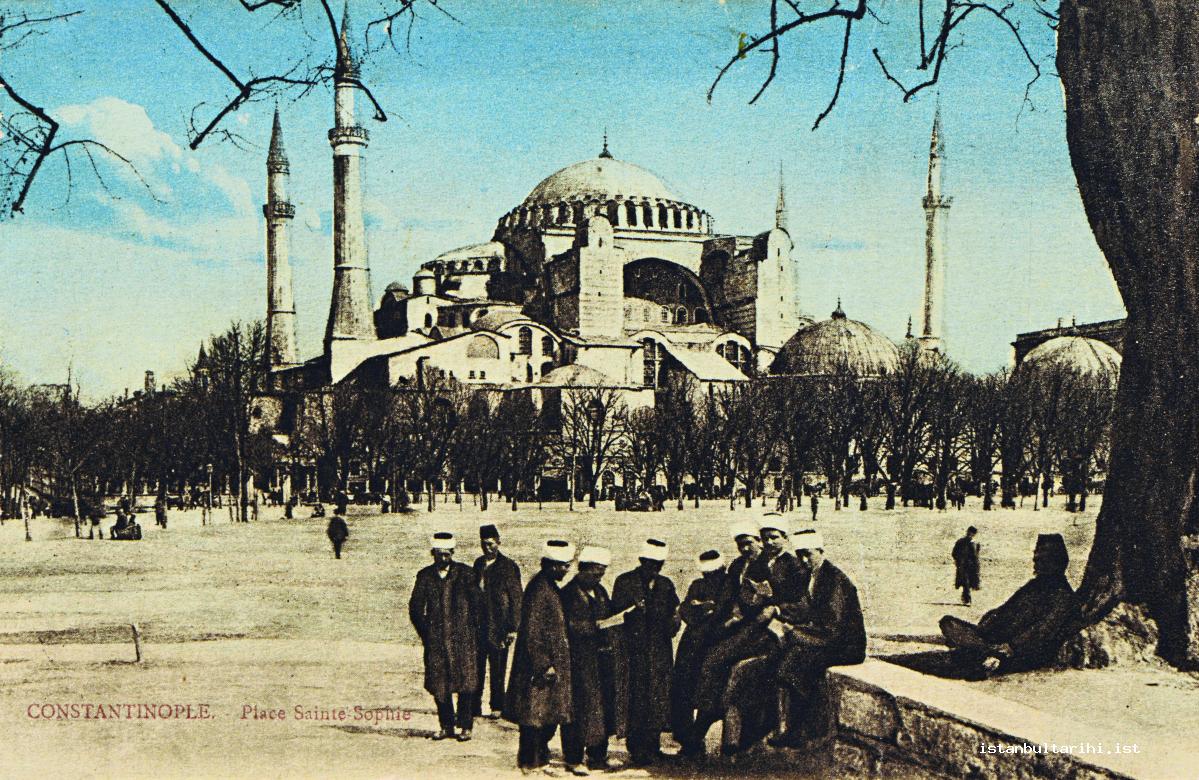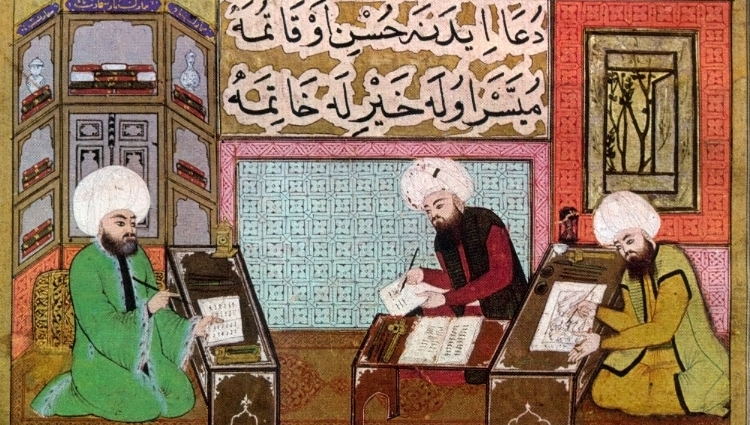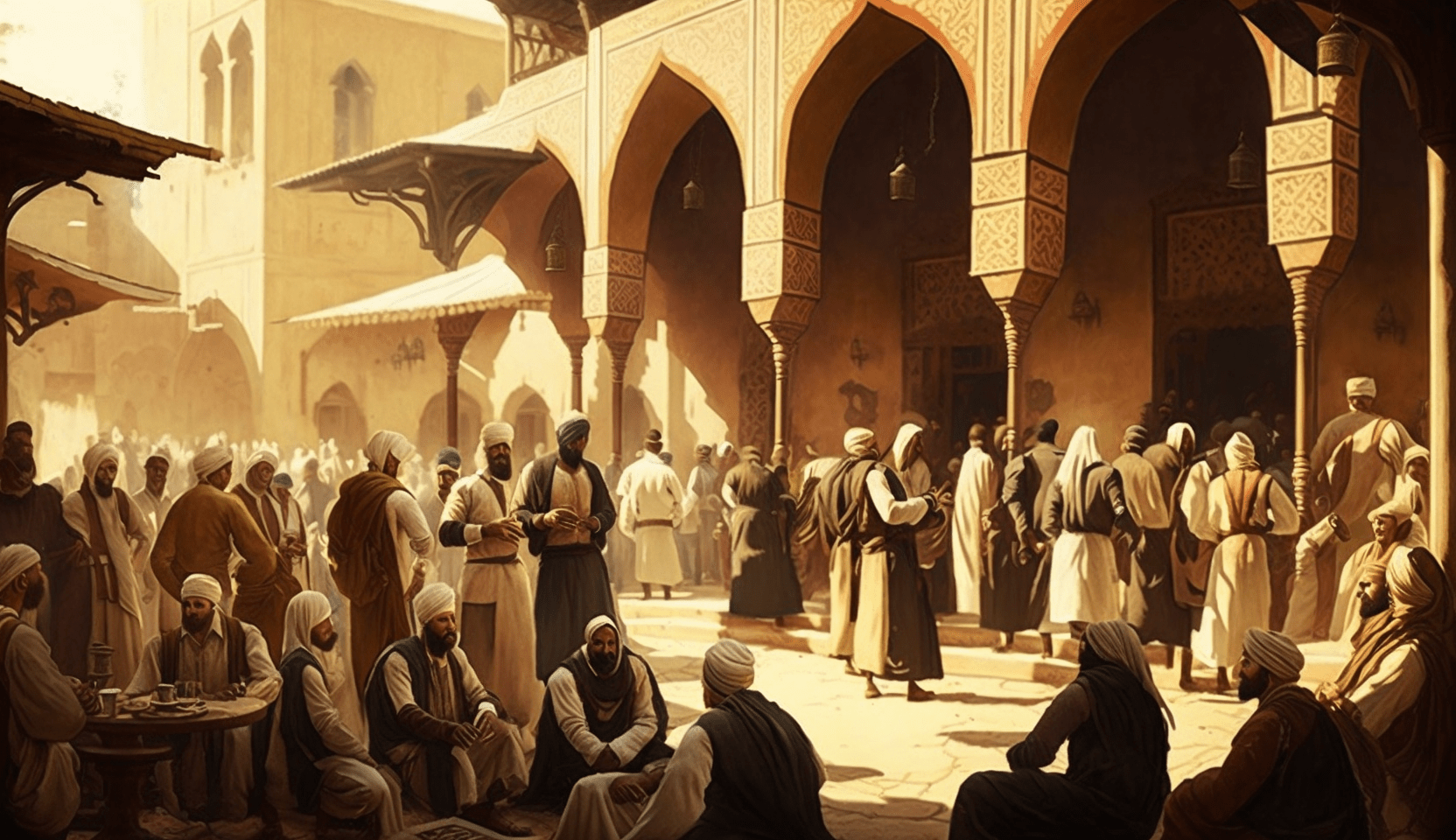The Role of Madrasas in Ottoman Education
Madrasas played a pivotal role in the education and intellectual framework of the Ottoman Empire. As institutions of higher learning, they served not only as centers for religious education but also as hubs for scholarly debate and scientific inquiry. The curriculum in these madrasas was vast, encompassing various fields such as theology, law, mathematics, astronomy, and medicine. This multifaceted approach laid the groundwork for the integration of religious and secular knowledge.
Primarily designed to educate future scholars and religious leaders, madrasas had a structured system for educating students, often organized into levels that ranged from basic learning to advanced scholarship. The students, or talib, were immersed in a rigorous educational environment where they engaged in discussions, memorized texts, and participated in lectures.
One notable aspect of madrasas was their link with the Ulama. These educated scholars were responsible for both teaching and administering religious law, forming a significant bridge between education and religious authority in the empire. The Ulama not only delivered lectures but also acted as mentors to students, emphasizing the importance of practical application of knowledge in their respective fields.
The ancient madrasas also contributed to a standardized education system. They provided a formalized method of assessing knowledge through the examination processes, ensuring that students met specific academic and moral expectations before graduating. This form of educational structure helped maintain the quality and authority of the teachings and the scholars that emerged from these institutions.
In essence, madrasas were vital to the development of a knowledgeable society in the Ottoman Empire. By fostering a culture of learning and inquiry, they contributed significantly to the education and dissemination of knowledge across various disciplines, influencing generations and leaving a lasting impact on the scholarly landscape of the region.

How the Ulama Shaped Scientific Inquiry
The Ulama, or scholars, played a pivotal role in the development of scientific inquiry during the Ottoman Empire, particularly through their influence in education and the dissemination of knowledge. They were not only custodians of Islamic law and theology but also served as teachers and advocates for various branches of science, including astronomy, mathematics, and medicine. This dual role allowed for the integration of religious studies with scientific exploration, fostering an environment where knowledge was highly valued and pursued.
Madrasas were the primary institutions where the Ulama conducted their educational activities, effectively shaping the curriculum to include empirical methodologies alongside traditional Islamic teachings. This educational framework encouraged critical thinking and inquiry, prompting students to explore the natural world through observation and experimentation. As a result, the Ulama became key figures in promoting scientific thought that was aligned with Islamic principles.
Additionally, the Ulama were instrumental in translating and preserving ancient texts from Greek, Persian, and Indian scholars, which further enriched the scientific discourse of the time. Their efforts ensured that the knowledge from these cultures was accessible to Ottoman scholars, enabling a synthesis of ideas that propelled advancements in various scientific fields. This cross-pollination of knowledge not only expanded the boundaries of inquiry but also reinforced the Ulama's status as intellectual leaders in society.
In this way, the Ulama not only shaped scientific inquiry within the Ottoman Empire but also laid the groundwork for a rich scholarly tradition that would influence future generations. Their dual commitment to both Islamic doctrine and scientific exploration exemplified the complex relationship between education and knowledge in the empire, fostering an enduring legacy of inquiry that continued long after the Ottoman period.

Education and Religious Authority in the Ottoman Empire
The association between Education and religious authority in the Ottoman Empire was profound and intricate. Madrasas served not only as educational institutions but also as centers of religious influence. The ulama, or scholars, played a pivotal role in bridging the gap between education and the Islamic faith, shaping public opinion and ensuring that the principles of Islam were deeply embedded in the society.
Madrasas were the primary venues for religious education, teaching theological subjects alongside logic, philosophy, and the sciences. This comprehensive educational framework allowed the ulama to establish themselves as authorities on matters of religious interpretation and governance. Their teachings and rulings were essential in legitimizing the authority of the Ottoman state, which relied on the ulama to endorse its policies and maintain social order.
The ulama's influence permeated various aspects of everyday life, from personal conduct to the administration of justice. They acted as judges and advisors, using their educational background to ensure the application of Sharia law. This intertwining of Education and authority formed a cohesive structure where knowledge and religious fidelity reinforced each other.
Moreover, the relationship between education and religious authority allowed for the propagation of Islamic values throughout the empire. As madrasas expanded in both number and curriculum, they became not only a means of disseminating knowledge but also a tool for promoting the ideals of the state and religion, creating a unified cultural and religious identity that stretched across vast territories.
In conclusion, the dynamics between Education and religious authority in the Ottoman Empire were complex but significant, fostering an environment where scholarly pursuits underpinned governance and social cohesion, ultimately shaping the empire's trajectory for centuries.

Curriculum Development in Ottoman Madrasas
The curriculum in Ottoman madrasas was a vital part of the educational framework, significantly influencing both religious and secular scholarship. It was carefully structured around traditional Islamic sciences, ensuring a holistic approach to education. The primary focus was on the study of the Quran, Hadith, Fiqh (Islamic jurisprudence), and Arabic grammar, all of which laid the foundation for strong religious education.
In addition to these core subjects, madrasas began to incorporate various subjects that reflected the changing intellectual landscape of the empire. Science, mathematics, philosophy, and astronomy gained prominence as the need for a more comprehensive understanding of the world grew. This integration of secular subjects not only enriched the curriculum but also enhanced critical thinking and analytical skills among students.
The curriculum development in the madrasas was not static; it evolved in response to societal needs and advancements in knowledge. Under the influence of prominent scholars and the Ulama, madrasas adapted new ideas while still adhering to traditional teachings. This evolution demonstrated a balance between preserving religious authority and embracing scientific inquiry.
Moreover, the Ottoman state played a role in shaping the educational landscape. As the empire expanded, the demand for educated officials capable of administering diverse territories increased. The madrasas responded by introducing specialized courses that aligned with administrative requirements, reflecting a pragmatic approach to education.
Overall, the curriculum development in Ottoman madrasas was a dynamic process that facilitated the transmission of knowledge, both religious and secular, ultimately contributing to the broader intellectual heritage of the Islamic world.
Education and the Spread of Knowledge in Society
The Ottomans placed a significant emphasis on education and its role in societal development. Madrasas served as the primary institutions for learning, where religious and secular knowledge intertwined. These centers of learning produced not only scholars but also contributed to the cultivation of a well-informed populace.
Through the curriculum, which included subjects such as mathematics, astronomy, and philosophy alongside Islamic studies, madrasas played a pivotal role in disseminating knowledge. Students from diverse backgrounds attended these institutions, fostering an environment of intellectual exchange and cultural interaction.
Moreover, the Ulama, the religious scholars trained in these madrasas, were instrumental in spreading this knowledge beyond the classroom. Their teachings and interpretations of science and philosophy permeated various facets of society, influencing everything from legal systems to agricultural practices.
This widespread access to education and the promotion of critical thinking facilitated by the madrasas helped to create a more educated society that was capable of engaging with contemporary issues at both local and global levels. As a result, the Ottoman Empire became a beacon of knowledge, where learning was not confined to the elite but was accessible to a broader segment of the population.
In conclusion, the madrasas and the Ulama in the Ottoman Empire were pivotal in ensuring that education and its benefits permeated throughout the society, paving the way for a culture that valued learning and knowledge dissemination.

Innovations in Science and Technology from the Madrasas
The madrasas in the Ottoman Empire were not just centers of religious education; they were also pivotal in fostering advancements in various fields of science and technology. Education and education and methodology in these institutions helped promote a culture of inquiry and research that led to significant innovations.
One notable area of innovation was in the fields of mathematics and astronomy. Many Ottoman scholars, trained in the curriculum of madrasas, made substantial contributions to trigonometry and astronomy. Figures like Taqi al-Din, who established an observatory in Istanbul in the 16th century, played an essential role in improving astronomical instruments such as the telescope and quadrant, paving the way for more accurate celestial observations.
Madrasas also served as hubs for the translation and compilation of ancient Greek, Persian, and Arabic texts. This cross-cultural intellectual exchange allowed scholars to build upon existing scientific knowledge. The works of Ptolemy and Aristotelian natural philosophy were often revisited, leading to a synthesis of ideas that encouraged the development of new scientific methods and innovations.
In the realm of medicine, madrasas promoted the study of anatomy and pharmacology. The education and work of scholars like Clinical physician and philosopher Al-Razi, known for his writings on medicine, inspired many Ottoman practitioners to explore more systematic approaches to healthcare and treatment.
Moreover, the madrasas emphasized practical applications of scientific knowledge. Innovations in engineering, particularly in architecture and public infrastructure, reflected the teachings within these institutions. The construction of sophisticated aqueduct systems, bridges, and mosques showcased a blend of artistic beauty and technological prowess.
| Field of Innovation | Prominent Contributions |
|---|---|
| Astronomy | Taqi al-Din's observatory and advancements in telescopic technology. |
| Medicine | Systematic approaches to anatomy and pharmacology inspired by Al-Razi. |
| Engineering | Innovations in aqueducts, bridges, and mosque architecture. |
In conclusion, the innovations stemming from the madrasas of the Ottoman Empire not only enriched the empire itself but also significantly influenced subsequent generations of scholars, contributing to the global tapestry of scientific knowledge and technological advancements. This enduring legacy underscores the importance of the madrasas in the broader context of historical education and education and scientific exploration.

Education and Cultural Exchange in the Ottoman Empire
The Ottoman Empire was a tapestry of diverse cultures and religions, which significantly influenced its approach to education. This education and cultural exchange played a pivotal role in shaping the intellectual landscape of the empire. The madrasas, as centers of learning, not only disseminated Islamic knowledge but also facilitated the integration of various scholarly traditions from regions such as Persia, the Arab world, and even parts of Europe.
One of the key aspects of this cultural exchange was the interaction between the Ulama and scholars from different backgrounds. It fostered an environment of dialogue and collaboration, allowing for the sharing of ideas in fields such as philosophy, medicine, mathematics, and astronomy. For instance, many Ottoman scholars translated and commented on works by ancient Greek philosophers and later Islamic thinkers, bridging gaps between cultures.
Moreover, the Ottoman Empire maintained extensive trade networks and diplomatic ties, which further enhanced cultural exchanges. Through trade, new ideas in science and technology, as well as educational practices, flowed into the empire. The importation of knowledge was not a one-way street; Ottoman scholars also traveled extensively, bringing their insights and innovations back home, enriching the local educational institutions with contemporary advancements.
The interaction between diverse cultures enriched the curriculum of the madrasas, as they began to incorporate subjects that reflected a blend of Eastern and Western thought. This holistic approach to education and knowledge creation contributed to a vibrant intellectual climate, where the quest for knowledge transcended cultural boundaries. Consequently, the Ottoman madrasas became more than mere religious schools; they evolved into institutions that celebrated diversity and promoted an interdisciplinary approach to learning.
In conclusion, the dynamic interplay of various cultures within the Ottoman Empire created a unique educational environment. By recognizing and embracing cultural exchanges, the madrasas played a crucial role in fostering a rich tapestry of knowledge that not only served the empire but also left a lasting legacy on the broader Islamic and global intellectual traditions.
Frequently Asked Questions
What role did madrasas play in the Ottoman Empire?
Madrasas served as educational institutions that provided religious and secular instruction, training future scholars and officials in various fields of knowledge, including theology, law, and science.
Who were the ulama in the context of the Ottoman Empire?
The ulama were Islamic scholars and jurists who were responsible for interpreting religious texts, providing legal guidance, and ensuring the adherence to Islamic teachings within the society.
How did the madrasas contribute to the scientific advancements during the Ottoman period?
Madrasas not only centered on religious studies but also encouraged the study of sciences such as astronomy, medicine, and mathematics, thus fostering an environment conducive to intellectual inquiry and innovation.
What was the relationship between the ulama and the state in the Ottoman Empire?
The ulama enjoyed a significant influence within the Ottoman state, as they were often involved in administrative roles and helped legitimize the sultans' authority, balancing religious and political power.
How were the curricula in madrasas structured?
The curricula in madrasas typically included a combination of religious studies, including Quran and Hadith interpretation, and secular subjects like philosophy, mathematics, and natural sciences, adapting to the needs of the society.
What challenges did madrasas and the ulama face during the decline of the Ottoman Empire?
As the empire faced political and economic challenges, madrasas and the ulama struggled with modernization efforts, competition from Western educational models, and the need to reform their approaches to retain relevance.
What legacy did the Ottoman madrasas and ulama leave behind for future generations?
The madrasas and ulama left a profound legacy by laying the foundations for educational reform in the Muslim world, influencing Islamic thought, and contributing to the development of secular education systems in later periods.

